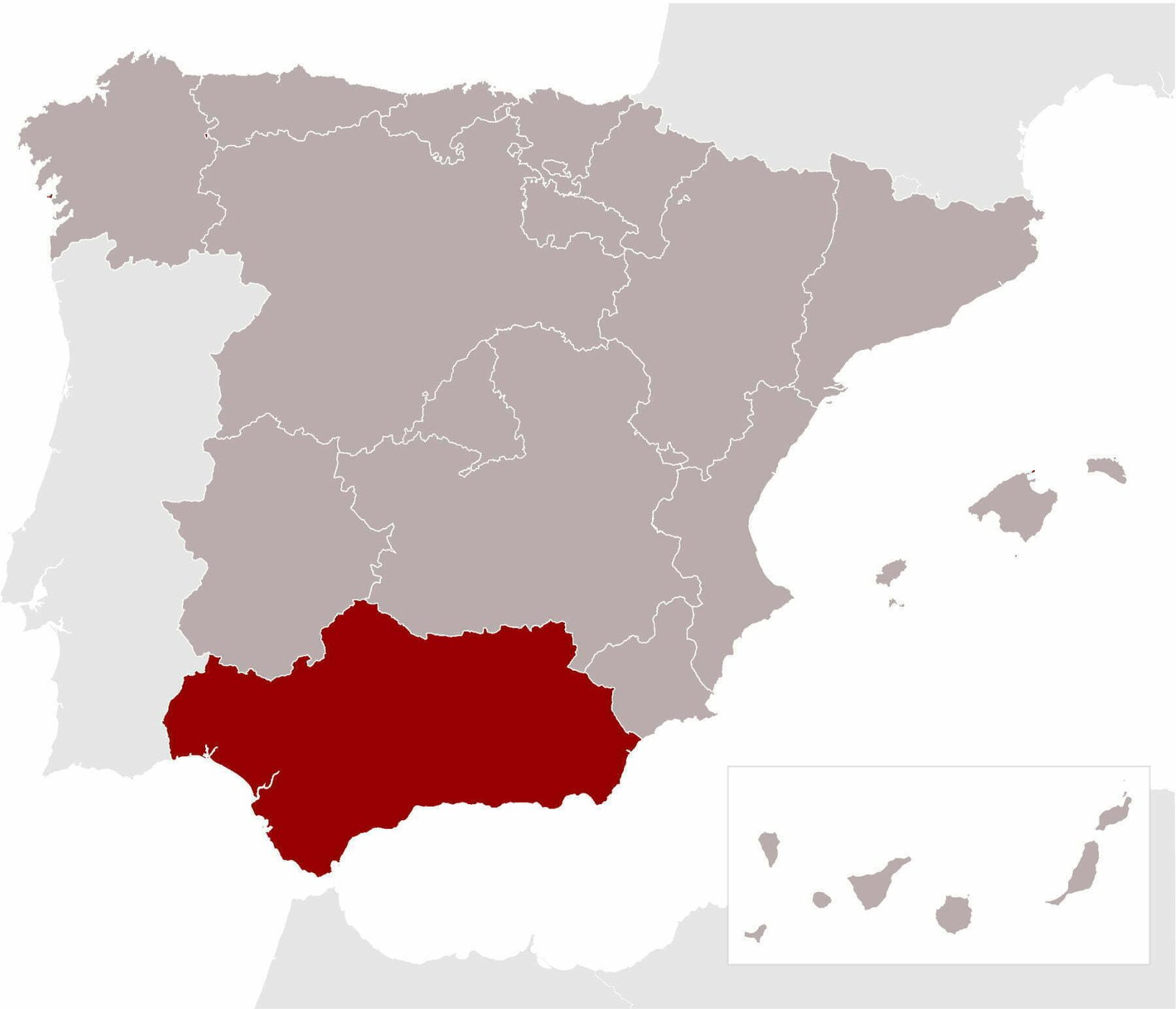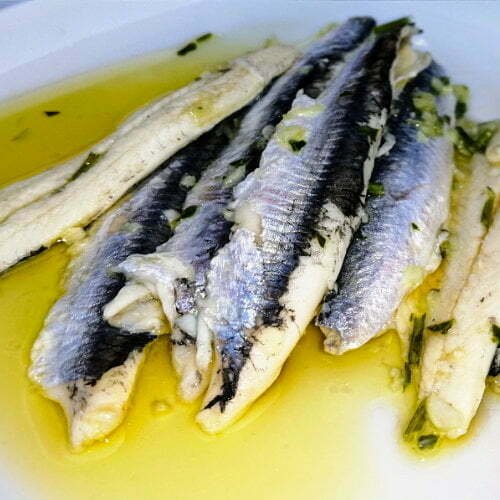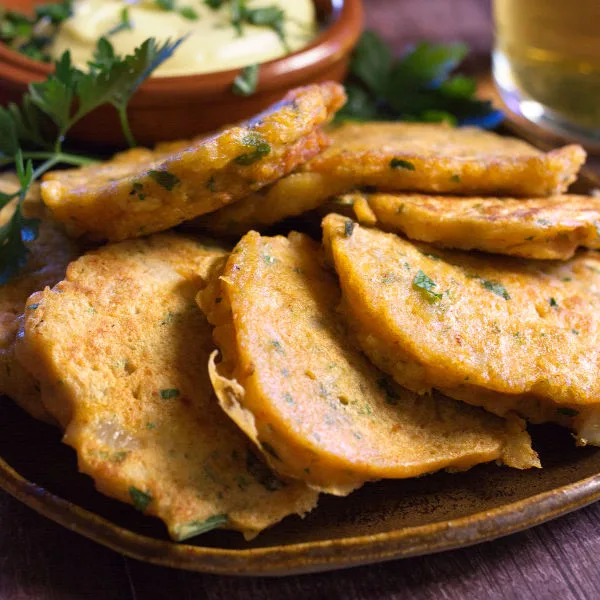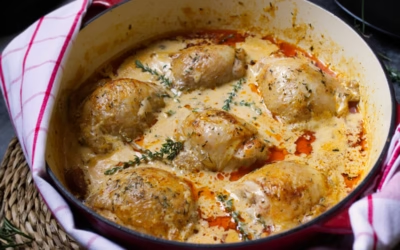Andalusia Foodie Guide
Andalucía

Our Andalusia foodie guide is packed full of resources and information to help you discover one of the brightest culinary stars of Spain. Come wander the streets of Granada, explore the great inland fortress cities such as Ronda, and the stunning coastal regions.
From luscious orange and almond groves, golden olive oils, to famous specialty dishes such as Iberico ham. The Andalusian region is full of rich flavors and century-old recipes that are still made today!
An Introduction to the region of Andalusia
Andalucia is one of the largest autonomous regions within Spain and spans from the western border with Portugal to the southern shores of the Atlantic and Mediterranean sea, all the way inland to the north reaching the communities of Extremadura, and extends all the way east to include the Gibratan peninsular and up to Murcia.
The region has incredibly diverse geography providing an arid Mediterranean climate that facilitates a strong agricultural output, with nearly half of the Andalusian region reserved as farmland. Crops of sunflowers, corn, and rice are common in the region as well as a majority of olive oil produced within the Jaen region.
Andalusian Climate
Andalucia enjoys a warm Mediterranean climate over most of the region, with very warm summers and mild warm winters. The east experiences very high winds, which push warm air throughout the region in the summer and produce very cold winds from the Mediterranean Sea in the winter months.
Due to the region’s mountainous terrain, some higher altitude towns (above 900m) can experience quite old days and nights well below 32°F / 0°c, with frosts and snow common in the winter months.
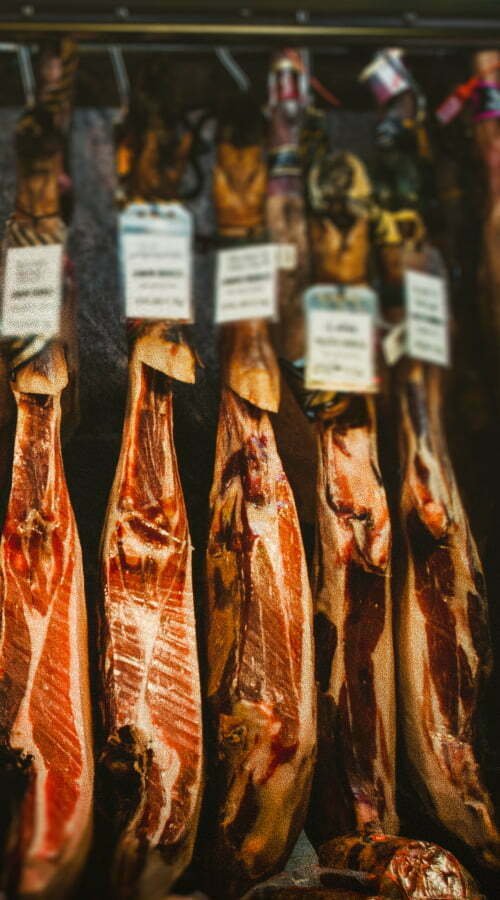
Andalusia produce and specialties
With access to such fresh and diverse produce, along with the strong influence of Moorish, Sephardic, and Phoenician cultures, Andalucia has some of the best food in Spain, with a strong focus on freshly farmed ingredients and the many delights from the sea!
Livestock also enjoys plentiful natural grazing throughout the Andalucian region, with many mountainous zones and valleys that are perfect for raising cattle, and sheep. Mountainous goats and pigs also thrive in this region, and the notable Black Iberian pig is native to the Iberian peninsula and is fed acorns to produce incredible tasty Jamón ibérico (Iberian ham).
Andalusian Jamón ibérico
Spain’s denominación de origen current regulation on jamón states that ‘jamón ibérico’ must be made from either pure breed or cross-bred pigs (as long as they are at least 50% Black Iberian in their ancestry).
Seafood and Shellfish of Andalusia
With five coastal provinces and over 38 ports within its territory, seafood features prominently in many of the typical dishes of Andalucia. White shrimp from the Bay of Cádiz, stuffed squid ( El calamar relleno de Lo de Ani de Algeciras), pescaito frito (fried fish), and shellfish are just some of the offerings. Then there are more localized dishes such as “Las bocas de la Isla”, a dish found in San Fernando that uses a local crab claw.
Tapas in Andalusia
Similar to the Communidad of Madrid, Andalusians enjoy the tradition of tapas and restaurant swarm with locals and tourists enjoying a variety of small dishes and delicacies that accompany an alcoholic drink such as a beer or wine.
Exploring the diverse tapas culture is best in any of the Andalucian cities such as Granada, Seville, Cadiz, Malaga, or Cazorla but excellent tapas dishes can be found throughout the region.
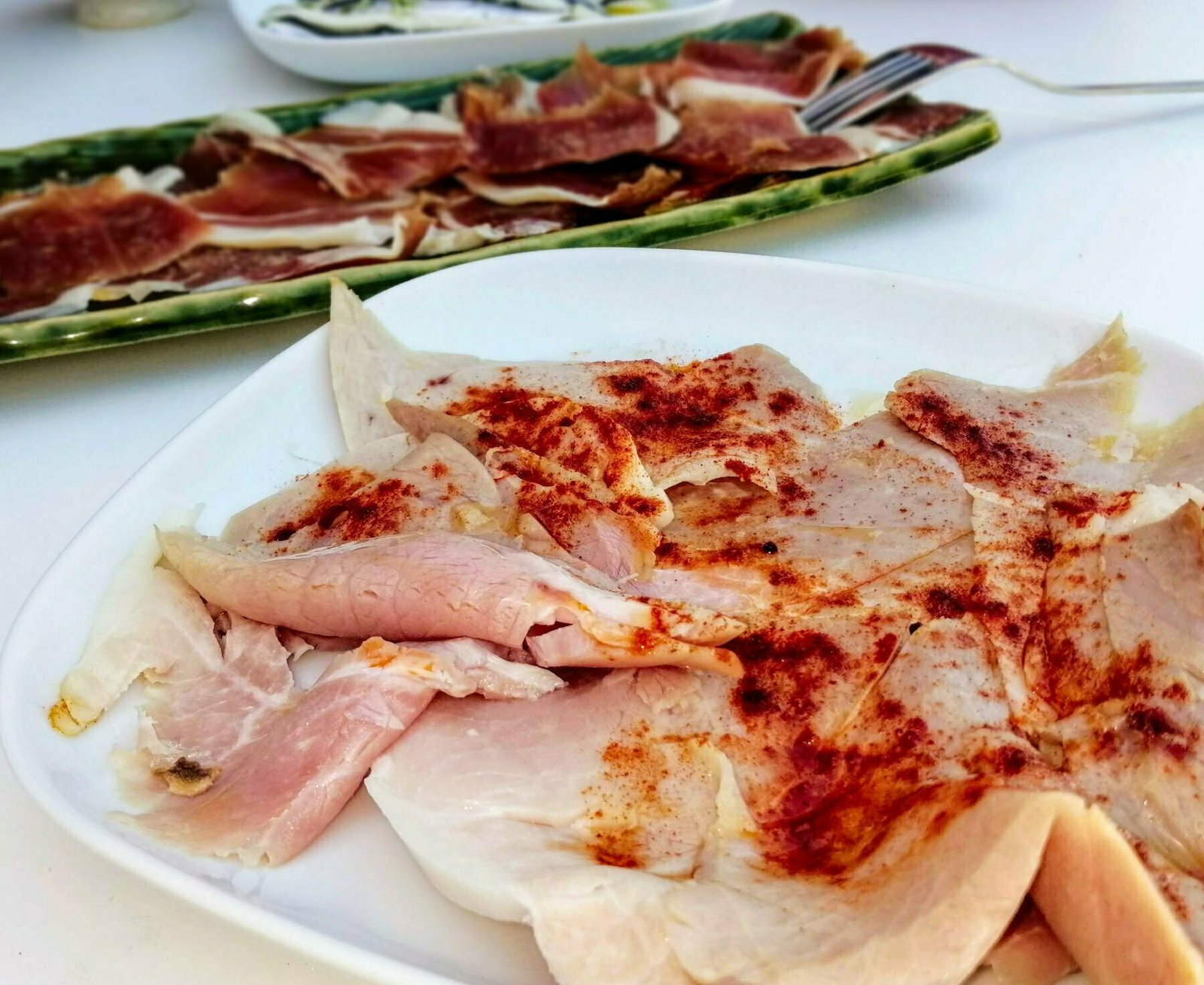
Typical dishes of Andalusia
- Las bocas de la Isla
- Tortillitas de Bacalao Andaluzas (Cod Fritters)
- Coquinas (Garlic clams)
- Puntillitas, battered and fried baby squid
- Jamón ibérico dry-cured pork ham
- Gazpacho andaluz (Andalucian gazpacho)
- Pipirrana (Jaén)
- Habas con calzones –
- Huevos a la flamenca
- Alcauciles rellenos (Cádiz)
- Migas de harina
- Ajo harina (Jaén)
- Soldaditos de Pavía
- Patatas a lo pobre (poor mans potatoes)
- Cordoban salmorejo
- Mojama (salt-cured, filleted tuna)
- Las gambas de Huelva
- Espetos (skewers of sardines BBQ’d over coals – Malaga)
- Tortillitas de camarones (shrimp fritters from Cadiz)
- Cazón en adobo is a marinated fish, usually, dogfish or monkfish, which is fried in a second step. During 4 to 8 hours, the fish is marinated in a mix of vinegar, peppers, garlic, oregano.
- Morcilla De Granada – Spanish sausage originating from Granada. Made with a combination of pork fat, blood, onions, salt, and spices such as oregano and paprika.
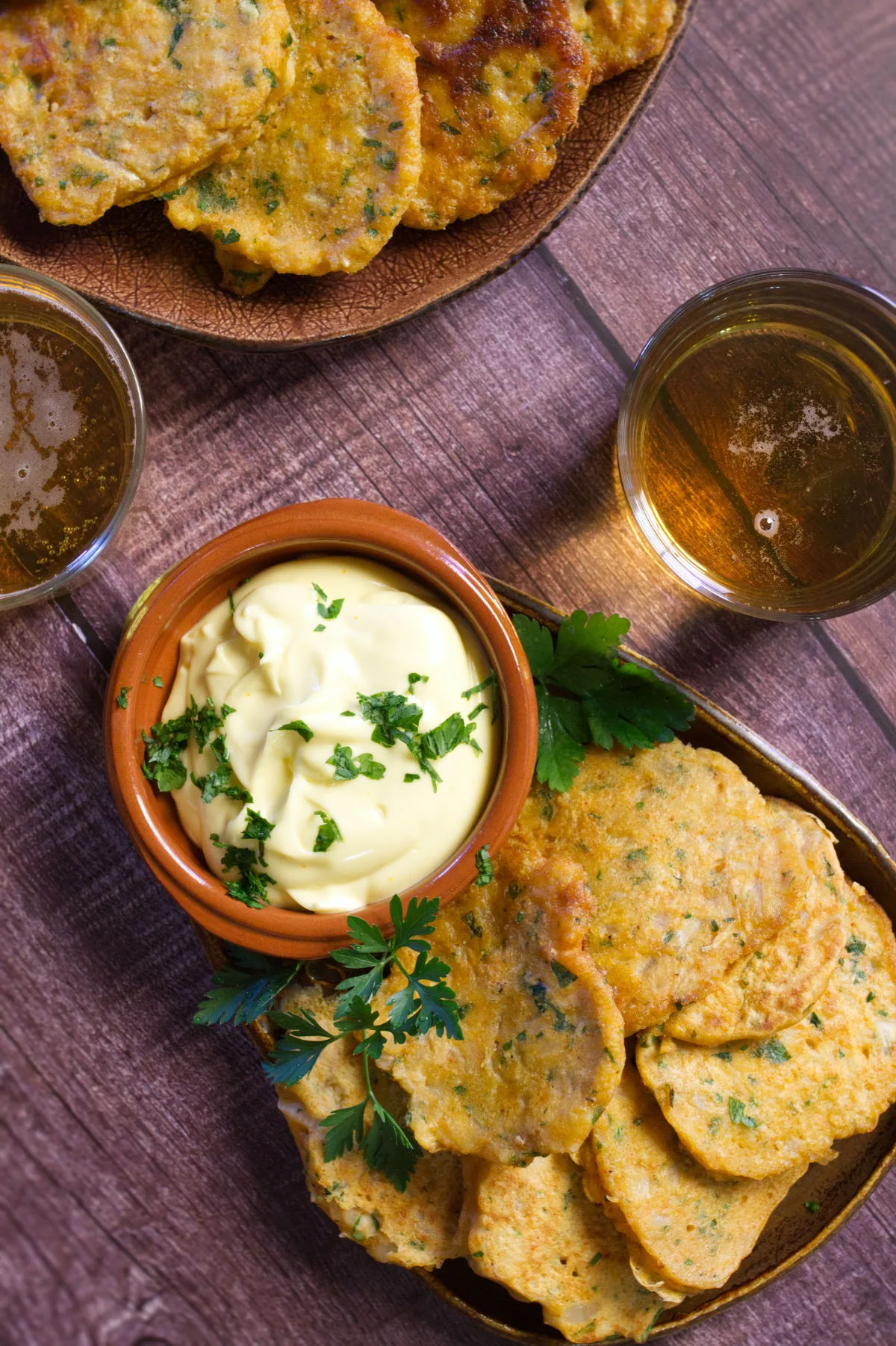
Famous cheese of Andalusia
Spanish cheeses are as diverse as the regions. With a strong farming industry, cheese making is in the Andalusian heritage and the region has several notable kinds of cheese that should be sampled at any opportunity!
Perhaps one of the most famous regions of Andalusia is the Sierra de Cadiz, which is loaded with stunning natural beauty, the Grazalema Natural Park, and of course artisan Andalucian cheeses.
The cheese of this region is most prominently made from milk of native species in the area, in particular the Payoyo goat and the Merino Sheep. One of Andalusia’s most well-known cheeses is the popular Payoyo cheese from the Grazalema region which is made from the Payoya goat milk.
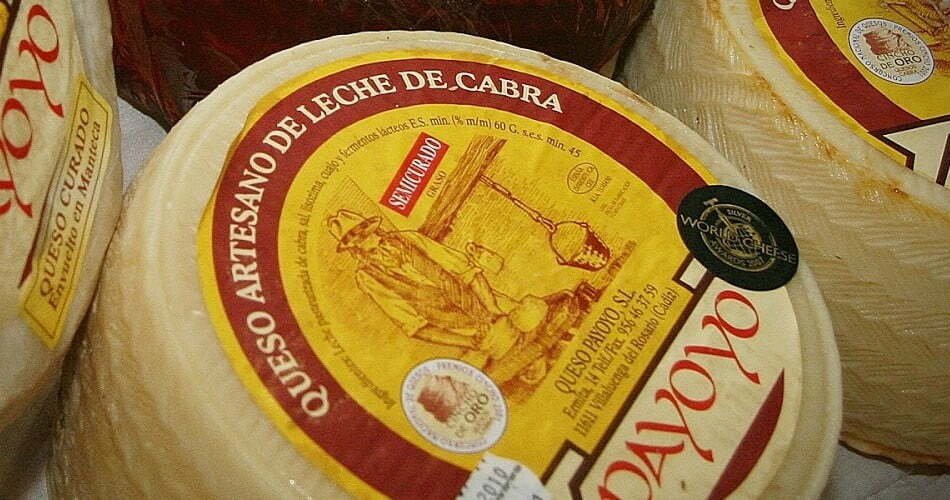
Other well-known cheeses of the Andalusian region include;
- Queso Montes de Málaga.
- Monte Robledo Cheese (Huelva)
- Doñana Cheese (Huelva)
- El Bosqueño Cheese (Cádiz)
- Doña Manuela Cheese (Huelva)
- Ubrique Cheese (Cádiz)
- Blanca Serrana Cheese, (Málaga)
Famous Drinks of the South
In a region where the sun nearly never stops shining during the day, the Andalusian culture has always favored a tiple from time to time. Visit any of the larger cities within the Andalusian region (Granada, Cadiz, Malaga, Ronda) and you’ll be welcomed by many lively tapas bars where you can sample the various drinks of the region whilst enjoying a tapas morsel.
One of the most famous tiples of Andalusia is Sherry, and when it comes to Spanish sherry, there’s one small village that stands out.
Jerez
Jerez translates as sherry in Spanish and the wine is named after the region of the same name. Like many foods and wines of Spain that carry the D.O. stamp of authenticity, there are also strict criteria that must be met to classify a sherry as Jerez sherry. Specifically, fortified white wines made using Jerez grapes can be awarded the D.O Jerez y Sanlúcar de Barrameda (Denominación de Origen).
Typical drinks found in Andalusia
- Manzanilla: One of the driest sherries. Pale yellow in color, it is produced exclusively in the seaside town of Sanlúcar de Barrameda.
- Palo Cortado is the rarest dry sherry variety
- Made from Palomino grapes in Jerez or Puerto de Santa María, Fino is the driest and the most delicate sherry variety
- Agua de Sevilla is a Spanish cocktail that is typically made with a combination of pineapple juice, sparkling wine, triple sec, whiskey, sugar, and sour mix
- Rebujito is a popular Andalusian cocktail that is made with sherry, lemon-lime soda, and fresh mint.
- Brandy de Jerez is a type of Spanish brandy that is made in the sherry triangle. It has to be aged using the traditional solera system
- Oloroso is a variety of fortified sherry wines that are made from Palomino grapes
- Fifty-fifty, or locally better known as fitifiti, is a popular Spanish cocktail that is mainly associated and enjoyed in Córdoba. The drink is a combination of white wine and sweet dessert wine. As the name suggests, the cocktail calls for equal amounts of both drinks, but the ratio may be adjusted to make it more or less sweet.
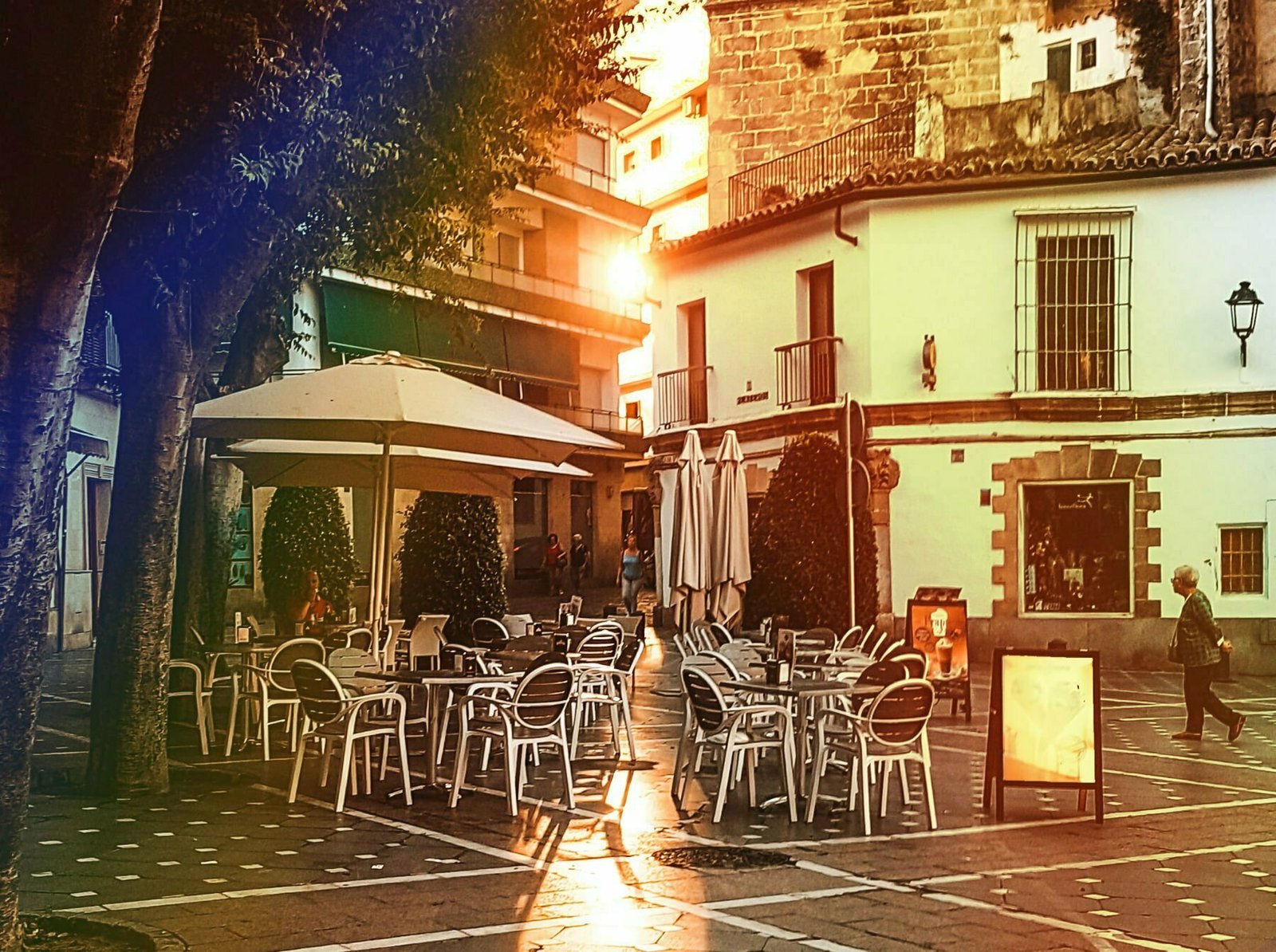
Desserts of Andalusia
- Roscos fritos are typical Spanish desserts that are similar to donuts, but they have a different texture and are a bit sweeter than regular donuts.
- Mantecadas de Estepa is a type of Christmas sweet cake traditionally made in the municipality of Estepa, in the province of Seville
- Piononos are traditional Spanish pastries originating from Santa Fé in Granada. This syrupy sponge cake filled with cream and cinnamon is rolled up into a cylinder, drenched with rum-laced syrup, and crowned with toasted cream and sugar.

Traditional Andalusian Recipes
Easy to follow, Step-by-Step Guides
Poor Man's Potatoes
(Patatas a Lo Pobre)
Roast Pork shoulder
Cerdo Secreto
Boquerones
Anchovies w/ garlic & olive oil
Spanish Cod Fritters
Tortillitas de Bacalao Andaluzas
The Mediterranean Diet -
It’s no secret that the Mediterranean diet is healthy. It has been proven in numerous studies from all corners of the world; it aids weight loss, reduces the risk of heart disease and type 2 diabetes, as well as a growing list of other health benefits.
Find out what’s most exciting about the diet and create some incredibly tasty and simple Spanish recipes.
Spanish-Style White Bean Dip with Caramelized Onion
Spanish-Style White Bean Dip with Caramelized Onion This Spanish-Style White Bean Dip with Caramelized Onion is the Tapas you've been looking for! Looking for a delicious, creamy, and crowd-pleasing dip that fits perfectly...
Roscón de Reyes: Spain’s Most Playful Christmas Cake
Roscón de Reyes: Spain’s Most Playful Christmas Cake 👑🍊If Christmas in Spain had a grand finale dessert, this would be it. Roscón de Reyes is the sweet, crown-shaped cake that takes centre stage on Día de los Reyes Magos (Three Kings Day),...
Creamy Paprika-Infused Chicken Thighs
Creamy Paprika-Infused Chicken Thighs This Spanish creamy paprika-infused chicken thighs with chorizo recipe makes for an easy one-pan dinner. Tender, golden chicken thighs seasoned with plenty of fresh herbs and Spanish sweet...

